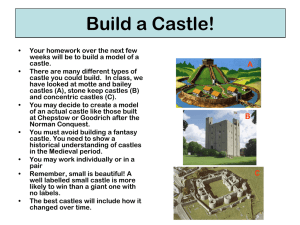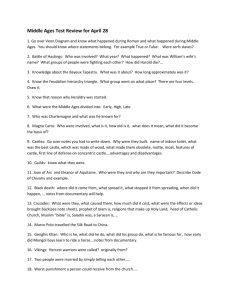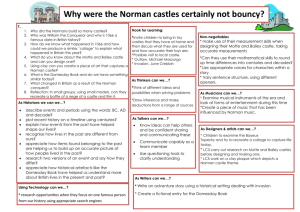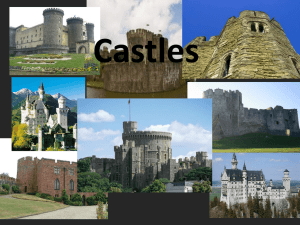Thurnham Castle
advertisement
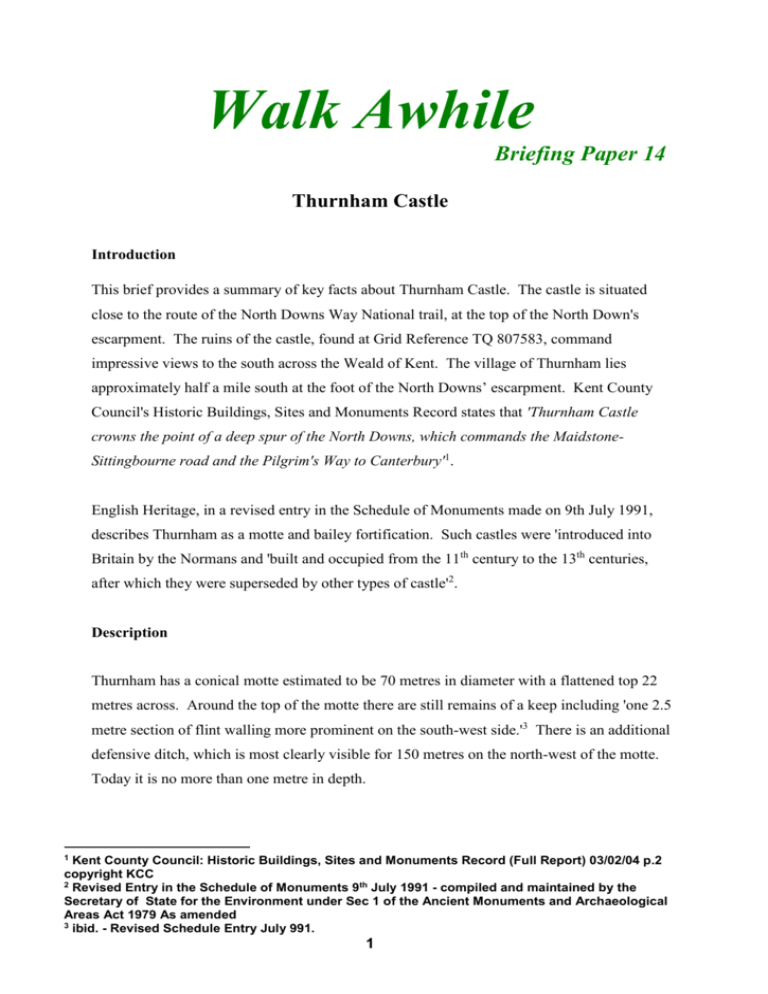
Walk Awhile Briefing Paper 14 Thurnham Castle Introduction This brief provides a summary of key facts about Thurnham Castle. The castle is situated close to the route of the North Downs Way National trail, at the top of the North Down's escarpment. The ruins of the castle, found at Grid Reference TQ 807583, command impressive views to the south across the Weald of Kent. The village of Thurnham lies approximately half a mile south at the foot of the North Downs’ escarpment. Kent County Council's Historic Buildings, Sites and Monuments Record states that 'Thurnham Castle crowns the point of a deep spur of the North Downs, which commands the MaidstoneSittingbourne road and the Pilgrim's Way to Canterbury'1. English Heritage, in a revised entry in the Schedule of Monuments made on 9th July 1991, describes Thurnham as a motte and bailey fortification. Such castles were 'introduced into Britain by the Normans and 'built and occupied from the 11th century to the 13th centuries, after which they were superseded by other types of castle'2. Description Thurnham has a conical motte estimated to be 70 metres in diameter with a flattened top 22 metres across. Around the top of the motte there are still remains of a keep including 'one 2.5 metre section of flint walling more prominent on the south-west side.'3 There is an additional defensive ditch, which is most clearly visible for 150 metres on the north-west of the motte. Today it is no more than one metre in depth. 1 Kent County Council: Historic Buildings, Sites and Monuments Record (Full Report) 03/02/04 p.2 copyright KCC 2 Revised Entry in the Schedule of Monuments 9th July 1991 - compiled and maintained by the Secretary of State for the Environment under Sec 1 of the Ancient Monuments and Archaeological Areas Act 1979 As amended 3 ibid. - Revised Schedule Entry July 991. 1 To the west of the motte lies the bailey area 'defined by a thick flint wall, much of which has been reduced to footings by robbing of the stone but which survives to an impressive 3.5 metres in height along the northern edge. Integral to this northern curtain wall, and besides the motte ditch, is the remains of the gate house, which is 10 metres long by 5.5 metres wide with blocked Norman-style archways.'4 To the south quarrying has damaged the boundary wall of the bailey, although the origins of the quarry may have been for the provision of flint for the castle walls. History The Normans developed 'motte and bailey castles as garrison forts during military offensive operations, as strongholds and in many cases as aristocratic residences and the centre of local or royal administration'. Pilgrims Way commentator, Christopher C.Wright suggests that the Norman structure may have been 'built on the foundations of an earlier structure to guard an ancient trackway over the ridge from Maidstone to the coast near Sittingbourne, a track used for the transport of salt'. 5 Other commentators have also suggested that the site was in use as a watchtower during the Roman occupation. It has also been suggested that following the Roman occupation a fortification existed on the site, which became known as Godard Castle founded by a Saxon named Godardis. Robert de Thurnham built the present fortifications in the reign of Henry II. Some accounts suggest that Robert de Thurnham went to the crusades with Richard the Lionheart and was given command of the English fleet and later made Governor of Cyprus. By 1215 there is documented evidence referring 'to the lands within the walls of the castle', which may indicate that it was already in ruins as reported in the early 19th century.'6 The castle has recently been acquired by Kent County Council and has been included in the White Horse Millennium Wood and Country Park Project. Much of the site has been cleared of undergrowth and public access has been provided. In August 1999 Thurnham Castle benefited from £67,500 lottery funding and English Heritage believes that the site retains considerable potential for the recovery of evidence about the nature and duration of the use of the castle. Derek Bright Walk Awhile Ltd 6th February 2004 4 Ibid - Revised Schedule Entry July 1991. Christopher C Wright - A Guide to the Pilgrims way and north Downs Way 1993 4ht edition p.222 6 www.kent-history.com/castles.thurnham.php 5 2

